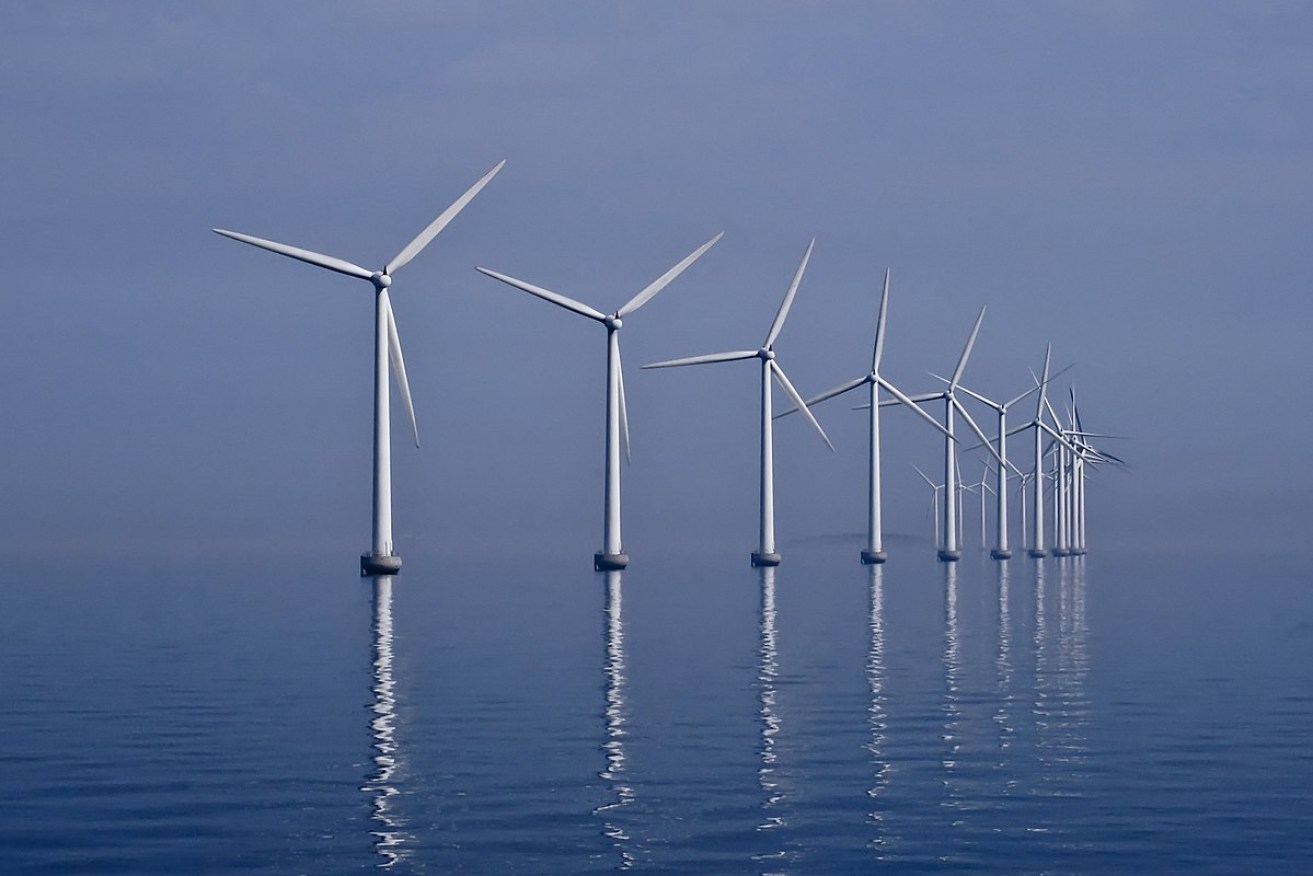Offshore wind farm operators eye SA’s south east
South Australia’s south-east coast is being considered for offshore wind farms after legislation allowing the developments recently passed federal parliament, raising regional employment hopes but also environmental concerns.

Photo: Kim Hansen/Wikimedia Commons
Offshore wind farms harnessing stronger and more reliable ocean winds have been in operation for decades overseas, but were only permitted in Australian waters after the Offshore Electricity Infrastructure bill cleared federal parliament in late November.
BlueFloat Energy country manager Nick Sankey revealed to InDaily that his company is now assessing sites off South Australia’s south-east coast and is in consultations with the state government.
Offshore wind turbines can either float or be fixed to the ocean floor depending on water depths, but Sankey said the South East sites would likely be best suited to the fixed approach.
“In our site analysis we look for a good consistent wind resource, proximity to connect to the grid, and the right marine environment — to combine all of them, we’ve found the south eastern coast of SA has potentially attractive areas leading down into Victoria,” he said.
“We are considering multiple sites, but as to how many to develop, that will be down to the process — ideally we’d like to come out in the next few months with an announcement of our next sites.”
BlueFloat Energy, which is based in Spain, is also looking at Victoria, NSW and Tasmania in partnership with Australian consultants Energy Estate, and has identified locations offshore from the Hunter Coast, Wollongong and Gippsland.
Sankey said the passage of federal laws last year were “critical”, and is now waiting for the federal energy minister Angus Taylor to formally declare which areas will be eligible for offshore wind and grant licences, at which point developers can put monitoring equipment into the water and commence more detailed studies.
UK-based Australis Energy is also targeting the South East, with plans for a 600MW offshore wind farm that could power more than 400,000 South Australian homes.
Located 10km off the coast from Kingston, the $1.8 billion SA Offshore Windfarm would comprise up to 75 wind turbines measuring up to 260m high.
An application for Impact Assessment was submitted to the state government in August 2021.
Subject to planning and environmental approval, Australis Energy hopes to commence construction in 2024/25 and be generating electricity by 2027.
Kingston District Council Chief executive officer Nat Traeger told InDaily the project could prove a boon for the town, with up to 800 jobs during construction and 100 operational roles beyond that.
Traeger expressed hope the project would lead to funding for coastal infrastructure, with Kingston’s boat ramp currently inoperational and the council pouring money into combating coastal erosion.
The wind turbines would be visible from a distance from land, but Trauger said she does not see that as a negative.
“We’re interested in the interest in it — I’ve seen the interest normal wind farms have, so we’d be looking to capitalise on tourism and exposure,” she said. “We could do helicopter tours, potentially a charter tour around the development. And they’ll be visible from the shoreline, if you don’t feel like taking to the air.”
Traeger said that Australis Energy representatives would be visiting the region next month and that the council will meet with the company to discuss next steps.
A national assessment by Blue Economy CRC in 2021 found South Australia had the right combination of offshore wind resources in shallow waters near to the coast, suitable for fixed foundation turbines.
As a case study, researchers examined a site off the southern tip of Eyre Peninsula and found the wind strength and reliability offered potential for 20 per cent more energy than the existing Lincoln Gap wind farm near Port Augusta, which has one of the best onshore wind resources in Australia.
The analysis also found an offshore wind farm at that site would generate power at times when Lincoln Gap turbines were not contributing due to a lack of wind.
Institute for Sustainable Futures research director Chris Briggs, who was involved in the research, said workers in South Australia’s onshore wind sector would have “transferable skills” useful for offshore turbines, and that offshore oil and gas workers could also play key roles.
Tom Quinn, head of research at renewable industry think tank Beyond Zero Emissions, said South Australia’s consistent offshore wind patterns presented an opportunity to build a new energy sector.
“Offshore wind is the natural partner to South Australia’s big onshore wind industry,” Quinn told InDaily.
“This is an opportunity to cement South Australia’s world leading advantage in wind generation and provide industry with the low-cost energy it needs to grow and employ more South Australians.”
Encounter Whales spokeswoman Elizabeth Steele-Collins told InDaily she was concerned noise pollution from offshore wind farms in the south east could impact on the migration of endangered Southern Right Whales.
“To do massive piledriving and construction in whale migration season is off the scale,” she said.
Steele-Collins said undertaking construction outside of the May-to-November migration season would be preferable, but that noise pollution concerns still exist during operational maintenance.
University of Melbourne underwater noise pollution expert Stuart Johnston told InDaily construction noise levels could disrupt marine ecosystems, but that evidence on the quieter operational sound levels was mixed.
“There are mitigation measures for construction – examples include a “bubble curtain” which encloses the underwater foundation of the turbine with a wall of bubbles during construction, reducing sound propagation,” Johnston said.
InDaily asked energy minister Dan van Holst Pellekaan for comment.




